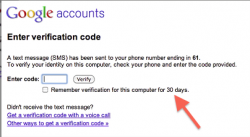Can not brute force something that changes every 30 sec. That the entire point is a 6 digit code that changes every 30 sec.
How the hell can it change every 30 seconds when a device can suspend the service for 30 days?
BTW, any passcode can be brute forced with a sufficient amount of time.
But, a secure password alone can make the amount of time needed for brute forcing unfeasible. So, the extra authentication is not required to protect oneself from a remote compromise if a secure password is used.
Also, 2-step authentication doesn't justify re-using passwords because not all accounts have this extra authentication. So, if an attacker gets the passwords via the user assuming that it is safe due to the extra authentication, the re-used password can still be used to comprise the user's other accounts.
If someone has local access to your system, then the extra authentication makes no difference. See my post above and my comments below.
It has nothing to do with the needing a network connection. As long as the server and the local device use the same system to generated the token and change the counter.
Not all 2-step authentication systems use one-time codes.
I was unaware that Google used one-time codes. I assumed Google's system allows codes to be re-used given the haphazard manner in which backup codes are implemented.
An attacker does not have to try to brute force the one-time codes given that each account has 10 backup codes.
The attacker only has to brute force 1 of those 10 backup codes to access the account.
Again, these codes only use numbers so they aren't inherently secure.
I have seen small battery operated ones that changed ever 30 sec that have no radio in them at all.
BTW, what happens when the battery dies? Do you have to set everything up again?
Hey, I remember your username. You use Windows. No wonder you need all this extra stuff to be secure.
If the person stole your device and has the counter on it then well they lack the password so they can not get in to it.
That is exactly my point. A secure password is still the most important security mitigation.
From there you can easily revoke that token generator so what it makes is completely worthless. Also any single device pass work can be revoked so it is no long works.
Sure, if you know someone is accessing the device.
But someone trying to compromise your account locally does not necessarily involve your device being stolen; someone can access your device without stealing it.
That option is there so if you use the same computer over and over again you do not want to do 2 step all the time.
And, allowing the extra authentication to be suspended negates the purpose of it in the first place.
So, that machine is functioning like it only has a single password. Which means that this is no more secure than having only a single password. Which means that it is still important to make sure to use a secure password.
All in all you have a lot of FUD in your entire post and a complete miss understanding of how it works. I suggest you go look it up and learn how it really works before you make yourself look like a fool.
Really?


